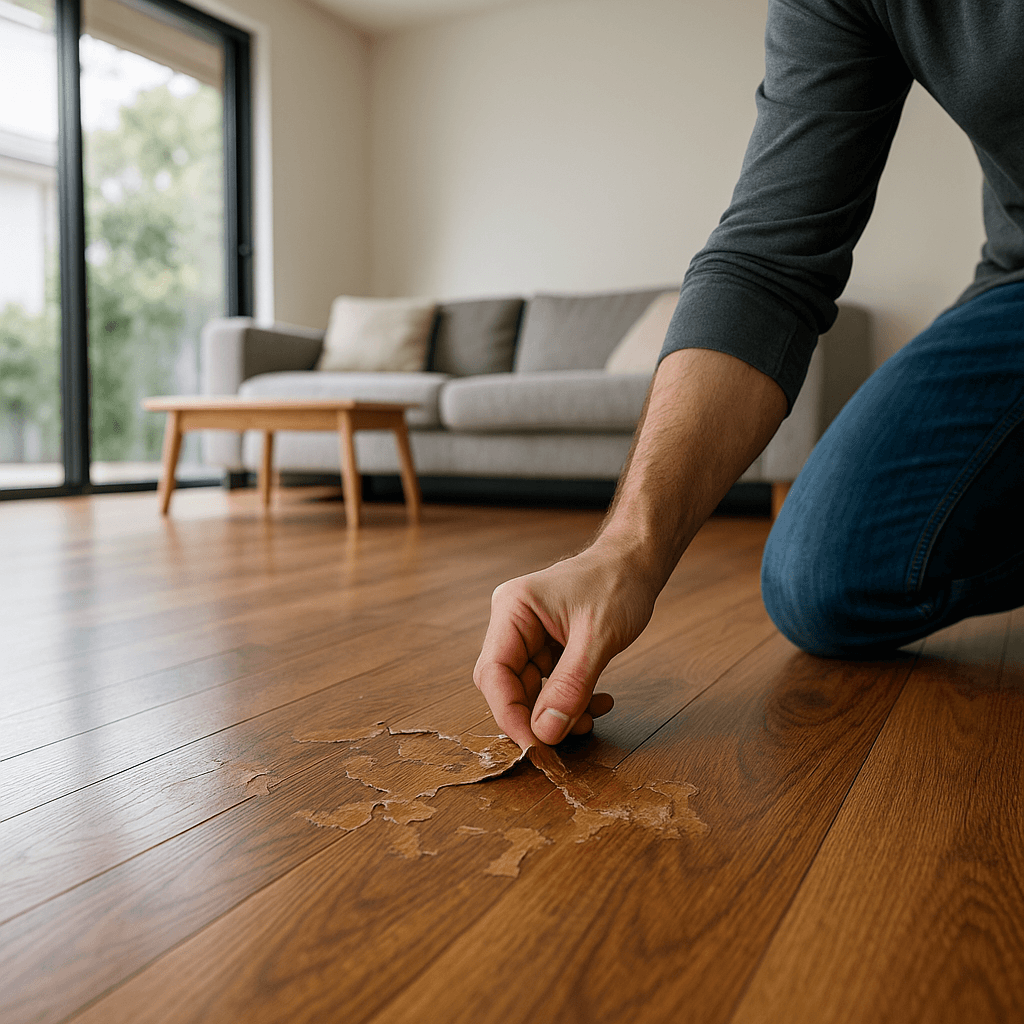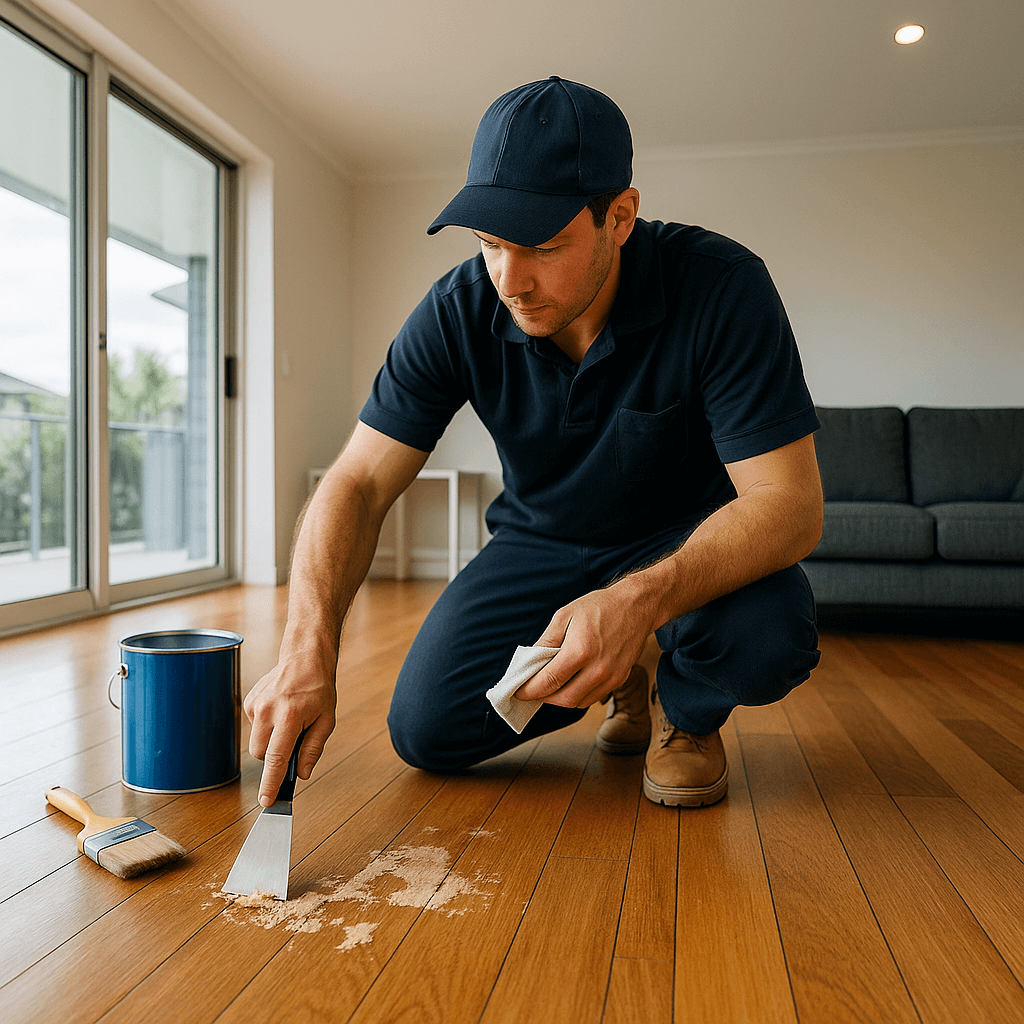How To Fix Peeling Polyurethane On Hardwood Floors
To fix peeling polyurethane on hardwood floors, identify the cause, such as moisture or inadequate application, then sand and recoat the surface. This restores the floor's protective layer and enhances its appearance.
- What causes polyurethane to peel off hardwood floors?
- How often should polyurethane be reapplied on hardwood floors?
- Can I fix peeling polyurethane without sanding the entire floor?
- What precautions should I take when using sanding equipment?
- Is it possible to do this repair myself, or should I hire a professional?
- What type of polyurethane is best for hardwood floors?
- How do I prevent my floor from being damaged after a fresh polyurethane application?
- Where can I find experts to repair my hardwood floor in Tauranga?
Hardwood floors, celebrated for their timeless appeal and durability, can occasionally face issues such as peeling polyurethane, which detracts from their natural charm. Understanding how to fix peeling polyurethane on hardwood floors is essential to maintain the floor's elegance and functionality. This can be attributed to several factors like humidity, improper application, or age, but addressing the issue promptly can prevent further damage.
Causes and Prevention
Peeling of the polyurethane layer is often due to environmental conditions, such as high humidity levels, or an application that was not executed correctly. Ensuring that conditions are optimal when applying polyurethane, such as maintaining low humidity and proper temperature, can help prevent peeling. Additionally, using quality materials and techniques is paramount in achieving a lasting finish on your hardwood flooring.
Steps to Repair
At Abstract Floors, a premier flooring service in Tauranga, New Zealand, we recommend a systematic approach to repairing damaged surfaces. Begin by thoroughly cleaning the affected area to remove any dust and debris. Next, gently sand the peeling sections to create a smooth and even surface. Care should be taken to not sand any intact sections that don't need repair.
Once the area is prepared, apply a fresh coat of polyurethane evenly across the repaired section. It is crucial to follow the manufacturer's instructions for application to ensure a smooth, durable finish. In certain cases, you might need to apply multiple coats, allowing adequate drying time between each to build up a strong protective layer.
Detailed Repair Process
When your hardwood floors start showing signs of peeling polyurethane, it not only affects the aesthetic appeal but also compromises the protection that the coating provides. This section offers a comprehensive guide to tackling this issue effectively. Armed with the right tools and techniques, and a little patience, you can rejuvenate your floors and extend their lifespan significantly.
Assessing the Damage
Before embarking on any repair work, it is essential to assess the extent of the damage to your hardwood floors. Check for areas where the polyurethane has completely flaked off, as well as those where it's starting to peel. This evaluation determines whether spot repairs are feasible or whether a total refinishing is required. Minor damage may only require touching up specific spots, while extensive peeling often necessitates a complete sanding and refinishing of the entire floor.
Preparation and Materials
Once you have assessed the damage, gather the necessary materials and tools for the job. This includes a sander, appropriate grit sandpaper, a vacuum for cleaning up dust, a tack cloth, polyurethane for refinishing, and a high-quality applicator such as a brush or roller. It's crucial to choose the correct polyurethane; consider using a water-based version for a faster application and quicker drying time. The preparation stage is vital to ensure a smooth application and long-lasting results.
Sanding and Applying Polyurethane
The next step involves sanding the hardwood floors to remove the old, peeling polyurethane. Start with coarser grit sandpaper to strip down the old finish, then gradually move to finer grits to smooth the surface. Thoroughly vacuum any dust particles and use a tack cloth to wipe down the floor, ensuring a clean surface for the polyurethane. Apply the new polyurethane evenly, following the grain of the wood. Multiple thin coats are preferable to a single thick layer to avoid streaking and ensure a hard, protective finish that looks professional.
Finishing Touches and Curing
Once the polyurethane is applied, it is crucial to allow adequate time for curing. Follow the manufacturer's instructions for drying times between coats, and ensure proper ventilation in the area. Avoid heavy traffic on the floors for at least 48 hours to prevent any impressions or damage during the curing phase. The final touch is to buff the surface lightly, which can enhance the sheen and smoothness of the finish. With care and attention to detail, your efforts will result in a revived, stunning hardwood floor.
By understanding and following this detailed repair process, you can effectively restore your hardwood floors and protect them against future damage. This proactive approach not only enhances the beauty of your floors but also prolongs their lifespan.
Essential Tools and Safety Measures
After understanding the detailed process of how to fix peeling polyurethane on hardwood floors, it’s important to equip yourself with the right tools and prioritize safety. This section offers insights into selecting the appropriate equipment and adhering to safety protocols that ensure a successful repair without any mishaps.
Selecting the Right Tools
The success of a floor repair project hinges significantly on using the correct tools. Key items include a floor sander, hand scraper, putty knife, and a high-quality polyurethane application tool such as a lambswool applicator or a high-density foam roller. Each tool serves a specific function, from removing old layers to applying new finishes, ensuring durability and a professional finish.
Additionally, a vacuum cleaner with a fine dust filter is crucial for cleaning the floor thoroughly between each sanding to avoid dust contamination in the new coating. A clean workspace not only produces better results but also reduces potential health risks associated with dust inhalation.
Prioritizing Safety
Floor repair work involves equipment and chemicals that require strict adherence to safety guidelines. Personal protective equipment (PPE) such as masks, goggles, and gloves must be worn at all times to prevent exposure to dust and chemicals. Work in well-ventilated areas to mitigate the buildup of fumes from polyurethane and other solvents. Additionally, it's advisable to wear knee pads and use ergonomic handles on tools to reduce strain during prolonged tasks.
A comprehensive understanding of each tool and chemical's safety data sheet (SDS) aids in the safe handling and disposal of materials, minimizing environmental impact and personal risk. This careful preparation underscores the importance of safety as a keystone in the effective repair of peeling polyurethane on hardwood floors.
By cultivating a solid foundation in tools and safety practices, you're well-equipped to tackle polyurethane peeling issues expertly. With your newfound knowledge, you're ready to learn more about why Abstract Floors is an excellent choice for handling these aspects professionally in Tauranga, New Zealand.
Why Choose Abstract Floors for Fixing Peeling Polyurethane Issues
When faced with the challenge of peeling polyurethane on your hardwood floors, finding a reliable and skilled service provider is crucial for a successful fix. Enter Abstract Floors, the preeminent choice for all your flooring needs in Tauranga, New Zealand. What makes us stand out? Let's explore why we are the best fit for addressing these specific floor repair issues.
Experienced Local Experts
Choosing Abstract Floors means entrusting your hardwood restoration to seasoned professionals who possess deep-rooted expertise in handling diverse flooring projects. Our team is not only skilled in the technicalities of repairing peeling polyurethane but also understands the unique environmental factors affecting floors in Tauranga. This local insight is invaluable, influencing how we tailor our approaches to each project. Our craftsmanship reflects a fine balance between science and art, ensuring that your floors are restored to their pristine condition.
Additionally, our presence in the Tauranga community extends beyond mere business transactions. We are committed residents, eager to contribute quality service and enhance the local living environment. Our reputation in this region is built on years of trust and consistent results, making us a reliable partner in your flooring journey.
What Sets Us Apart
Abstract Floors isn't just about fixing what's broken; it's about delivering a holistic service experience that emphasises quality and satisfaction. We employ innovative techniques and the highest grade materials, ensuring your floors receive the best possible care. Unlike many service providers, we adopt a customer-centric approach, listening attentively to your concerns and accommodating your specific needs. Each project is a personalised affair that guarantees durability and aesthetic appeal.
Moreover, the positive feedback from our clientele speaks volumes about our dedication to exceptional service. Not only do we resolve the technical issues, but we also provide invaluable guidance on maintaining your floors long after the repairs. The peace of mind that comes from knowing your floors are in skilled hands is an intangible benefit we offer, reassured by our solid track record.
Contact UsAs you consider the options available for your hardwood floor restoration, remember that the right choice goes beyond price. It includes the assurance of quality, the expertise of seasoned professionals, and a company’s commitment to its community. Abstract Floors is here to provide all of that and more.
The next section answers some Frequently Asked Questions, clarifying common queries about how to fix peeling polyurethane on hardwood floors and supporting you with additional clarity.
Frequently Asked Questions
What causes polyurethane to peel off hardwood floors?
Polyurethane can peel off due to factors like moisture, improper application, or the use of incompatible cleaning products. Regular maintenance and correct application methods help prevent this issue.
How often should polyurethane be reapplied on hardwood floors?
It's advisable to reapply polyurethane every 3 to 5 years, depending on the floor's usage and condition. Regular inspection will help determine when a new coat is necessary.
Can I fix peeling polyurethane without sanding the entire floor?
Yes, if the peeling is localised, you can sand the affected area, clean it, and apply a new coat of polyurethane to blend with the rest of the floor.
What precautions should I take when using sanding equipment?
Ensure proper ventilation, wear a dust mask, and use protective eyewear and gloves. It's also crucial to familiarise yourself with the equipment's operation beforehand.
Is it possible to do this repair myself, or should I hire a professional?
While it's possible to carry out minor repairs yourself, hiring a professional like Abstract Floors ensures a high-quality finish and saves time, especially for extensive peeling issues.
What type of polyurethane is best for hardwood floors?
Oil-based polyurethane typically offers durability and a warm finish, while water-based polyurethane dries quicker and is more environmentally friendly. Your choice will depend on your specific needs.
How do I prevent my floor from being damaged after a fresh polyurethane application?
Allow the floor to dry and cure completely before using it. Place mats by entryways to trap dirt and debris, and use furniture pads to minimise impact damage.
Where can I find experts to repair my hardwood floor in Tauranga?
For professional repair of hardwood floors in Tauranga, contact Abstract Floors. Our experienced team offers reliable and efficient service for all your flooring needs.


